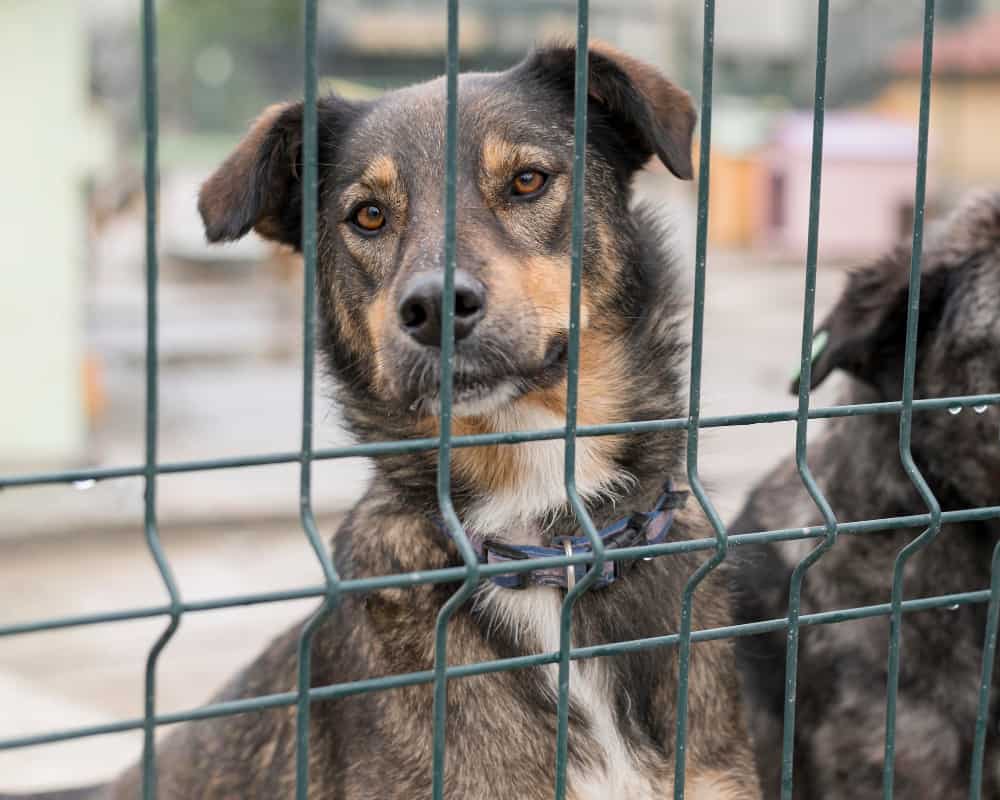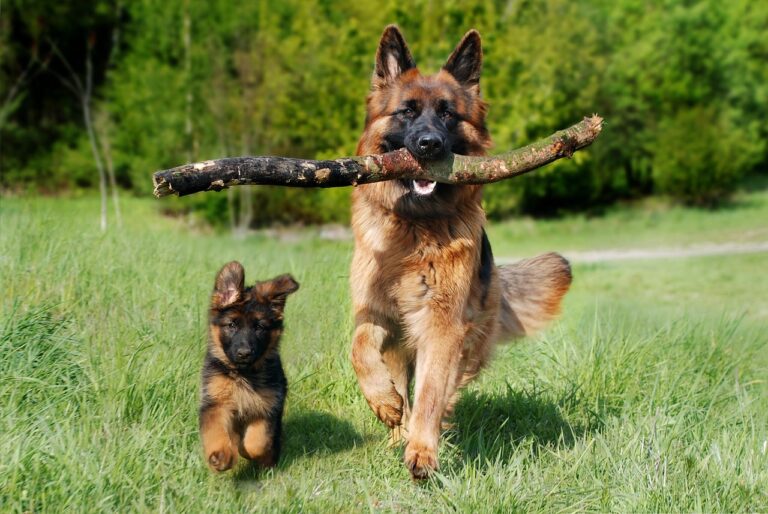Recognizing the Signs of Dog Abuse and Neglect: A Guide for Pet Owners

Do you know how to tell if a dog has been neglected? It’s important to be aware of the signs so you can help these poor animals. Neglected dogs often show poor physical condition, like being underweight or having matted fur. They may also lack proper veterinary care, meaning they haven’t received necessary vaccinations or treatments. Inadequate shelter, dirty living conditions, and a lack of identification are other red flags.
Neglected dogs may display visible signs of fear or anxiety, like cowering or excessive barking. Untreated injuries or illnesses and a lack of exercise are additional indicators.
By understanding these signs, you can play a vital role in identifying and assisting neglected dogs in your community.
Contents
- Key Takeaways
- Signs Of A Neglected Dog
- Poor Physical Condition
- Lack of Veterinary Care
- Inadequate Shelter
- Dirty Living Conditions
- Social Isolation
- Behavioral Issues
- Malnutrition
- Overcrowded Living Conditions
- Unkempt Living Area
- Visible Signs of Neglect
- Lack of Identification
- Visible Signs of Fear or Anxiety
- Untreated injuries or illnesses
- Lack of exercise
- Conclusion
Key Takeaways
- Physical signs of neglect in dogs include emaciation, matted fur, untreated injuries, lack of exercise, neglected hygiene, lack of vaccinations, and signs of pain and discomfort.
- Neglected dogs may also exhibit signs of inadequate shelter, such as a lack of protection from extreme weather conditions, insufficient space for movement, and unsanitary living conditions.
- Dirty living conditions can have detrimental effects on a dog’s health and well-being, including the risk of infections and diseases, skin irritations, and respiratory issues.
- Neglected dogs may experience social isolation and behavioral issues, such as excessive barking, destructive behavior, withdrawal or anxiety, aggression, and a lack of social interaction and attention.
Signs Of A Neglected Dog

Are you concerned that a dog may be neglected? There are several signs you can look out for. Poor physical condition, such as being underweight or having unkempt fur, is a common indicator.
Lack of veterinary care, inadequate shelter, dirty living conditions, and social isolation are also red flags to watch for.
By being aware of these signs, you can help identify and address cases of neglect in dogs.
Poor Physical Condition
You may often notice a neglected dog by their poor physical condition. It is heartbreaking to witness an animal suffering from neglect and abuse. Here are three signs of a neglected dog’s poor physical condition:
- Emaciation: A neglected dog may appear extremely thin and undernourished. Their ribs, spine, and hip bones may be easily visible, indicating a lack of proper food or water and care.
- Matted Fur: Neglected dogs often have tangled and dirty fur. Their coat may be full of mats, debris, and parasites, indicating a lack of grooming and regular hygiene.
- Untreated Injuries: Neglected dogs may have visible wounds, scars, or infections that have been left untreated. These injuries can range from minor cuts to severe infections, highlighting a lack of veterinary care and attention.
Recognizing these signs of poor physical condition in a neglected dog is crucial in identifying cases of animal abuse or neglect. It is our responsibility to report any suspected cases to the appropriate authorities to ensure the safety and well-being of these innocent animals.
Lack of Veterinary Care

After observing a neglected dog’s poor physical condition, it becomes apparent that one of the signs is a lack of veterinary care. Neglecting a dog’s medical needs is a clear indication of the owner’s disregard for the animal’s well-being. When a dog is not provided with regular veterinary care, it can suffer from various health issues that go untreated, leading to a decline in its overall health.
Some signs of neglect in terms of veterinary care include untreated injuries, untreated infections, and lack of vaccinations. These signs can be identified by examining the dog’s physical condition and behavior.
Neglected dogs often exhibit signs of pain, discomfort, and distress, emphasizing the urgent need for proper veterinary care. It is crucial for the sake of animal welfare that neglected dogs receive the necessary medical attention to improve their quality of life.
| Signs of Veterinary Neglect | Description |
|---|---|
| Untreated injuries | Visible wounds or broken bones that have not been addressed by a veterinarian |
| Untreated infections | Persistent skin infections, ear infections, or urinary tract infections that have not been treated |
| Lack of vaccinations | Absence of documentation or records indicating that the dog has received necessary vaccinations |
Inadequate Shelter
One of the signs indicating neglect of a dog is the provision of inadequate shelter. When a dog is not provided with proper shelter, it can suffer from various physical and mental health issues. Here are three signs that can indicate the presence of inadequate shelter for a neglected dog:
- Lack of protection: Neglected animals may not have a shelter that provides protection from extreme weather conditions such as rain, snow, or extreme heat. This can lead to discomfort, illness, and even death.
- Insufficient space: Inadequate shelter often means limited space for the dog to move around freely. This can result in confinement, muscle atrophy, and a decrease in overall physical and mental well-being.
- Unsanitary conditions: Neglected animals may be kept in filthy living conditions, with little to no cleaning or maintenance. This can lead to the spread of diseases, parasites, and infections.
It is essential to recognize inadequate shelter as a sign of neglect and report it to animal shelters or authorities to prevent further abuse or neglect.

Dirty Living Conditions
Continuing from the previous subtopic, it is evident when a neglected dog is living in dirty conditions. Dirty living conditions can be a clear sign of neglect and animal abuse. Neglectful owners often fail to provide a clean and safe environment for their dogs, which can have detrimental effects on their health and well-being.
Here are some signs that indicate a dog is living in dirty conditions:
| Signs of Dirty Living Conditions | Consequences |
|---|---|
| Feces and urine in the living area | Risk of infections and diseases |
| Soiled bedding and a strong odor | Skin irritations and respiratory issues |
| Lack of proper grooming and hygiene | Matted fur, parasites, and poor overall health |
These indicators show that the dog is not receiving the necessary care and attention it deserves. It is important to address these signs of neglect and report cases of animal cruelty to ensure the well-being of these innocent animals.
If your dog is consistently left alone for long periods of time without social interaction, it may be a sign of neglect and social isolation. Social isolation can have a detrimental impact on a dog’s overall well-being and can be considered a form of abuse or neglect. As animal lovers and responsible pet owners, it is important to be aware of the signs of social isolation in our furry friends. Here are three indications that your dog may be experiencing social isolation:
- Excessive barking or howling when left alone.
- Destructive behavior, such as chewing on furniture or digging holes.
- Withdrawn or anxious behavior when in the presence of other dogs or people.
If you notice any of these signs, it is crucial to address the issue and provide your dog with the social interaction they need. Remember, our pets rely on us for their emotional well-being, and it is our responsibility to ensure they receive the love, attention, and socialization they deserve.
Behavioral Issues

Are you noticing any behavioral issues in your dog that may be signs of neglect? Neglect can have a profound impact on a dog’s behavior, often leading to a range of issues.
One common sign of abuse or neglect is aggression. Neglected dogs may become fearful or defensive, leading to aggressive behavior towards humans or other animals.
They may also display destructive behavior, such as chewing furniture or digging holes in the yard. Another sign of neglect is excessive barking or howling, as dogs may resort to vocalization to seek attention or alleviate their anxiety.
If you suspect neglect or abuse, it is important to report it to animal control or local authorities, as these actions may be in violation of animal cruelty laws. By addressing the behavior issues and providing proper care, neglected dogs can have a chance at a happier and healthier life.
Malnutrition
A neglected dog’s malnutrition can be evidenced by their emaciated appearance and lack of energy. It is a sign of abuse and neglect that should not be ignored. Here are three signs to look out for:
- Visible ribs and bones: A malnourished dog will have a noticeable thinness, with ribs and bones protruding prominently. Their body may look gaunt and sunken in certain areas.
- Dull and dry coat: Malnutrition deprives a dog’s body of essential nutrients, leading to a dull and dry coat. The fur may lose its shine, become brittle, and easily fall out.
- Decreased energy levels: Dogs that are not getting enough food will lack the energy to engage in normal activities. They may appear lethargic, weak, and uninterested in their surroundings.
It is crucial to address malnutrition promptly, as it can cause serious harm to the dog’s health and overall well-being. Ensuring access to proper nutrition is essential for a dog’s happiness and longevity.
Overcrowded Living Conditions
Living in cramped quarters can be detrimental to a neglected dog’s physical and mental well-being. Overcrowded living conditions are a common sign of neglect and can contribute to the overall suffering of the dog.
When a dog is confined to a small and crowded space, it is unable to move freely, exercise, or engage in natural behaviors. This lack of space can lead to physical health issues such as muscle atrophy, joint problems, and obesity. Mentally, the dog may become stressed, anxious, or depressed, as it is deprived of mental stimulation and social interaction.
Overcrowded living conditions are a clear indication of neglect and are considered a form of animal abuse. It is important to address these issues and provide neglected dogs with a safe and spacious environment to improve their well-being.
Unkempt Living Area
Your dog’s unkempt living area is a clear sign of neglect. When a dog’s living space is not properly maintained, it can have detrimental effects on their physical and mental well-being. Here are some signs to look out for:
- Matted Hair: Neglected dogs often have tangled and matted fur due to lack of grooming. These mats can be uncomfortable and even painful for the dog, leading to skin irritations and infections.
- Overgrown Nails: Dogs that are neglected may have nails that are overgrown and curling. Long nails can cause discomfort and difficulty walking, leading to joint and posture issues.
- Dirty and Cluttered Space: Neglect can be seen in the overall cleanliness of the dog’s living area. A neglected dog’s space may be filled with feces, urine, and debris, which can result in unsanitary conditions and potential health hazards.
Visible Signs of Neglect
You may frequently notice visible signs of neglect in a dog that has been neglected, indicating the poor treatment it has received. These signs can be quite apparent and serve as a red flag for the neglect that the dog has endured. One of the most evident signs is the dog’s physical appearance. Neglected dogs often have matted fur, overgrown nails, and a generally unkempt appearance. They may also show signs of malnutrition, such as being underweight or having a dull coat. Another visible sign of neglect is the dog’s living conditions. Dogs that are neglected often live in dirty and crowded spaces, with little access to clean water or proper shelter. These visible signs of neglect serve as a reminder that these dogs deserve better treatment and care.

Lack of Identification
One common sign of a neglected dog is a lack of identification, indicating that the dog has not received the necessary care and attention from its owner. If you suspect cruelty, neglect, or abuse towards a dog, a lack of identification is an obvious sign that the dog may not be receiving proper care. Here are three reasons why lacking identification can be a sign of neglect or abuse:
- Lack of a collar or tags: A dog without a collar or identification tags may indicate that the owner does not prioritize the dog’s safety or well-being.
- Missing microchip: A dog without a microchip may suggest that the owner has not taken the necessary steps to ensure the dog’s identification and safe return if lost.
- Absence of registration: A dog without registration may imply that the owner is not fulfilling their legal responsibilities towards the dog’s welfare.
Visible Signs of Fear or Anxiety
If a neglected dog displays visible signs of fear or anxiety, it is crucial to address the underlying causes and provide the necessary care and support. Neglect, mistreatment, and abuse can have severe psychological effects on dogs, leading to fear and anxiety. These emotions can manifest in various ways, making it important to recognize the signs and take appropriate action.
Here are some visible signs of fear or anxiety in a neglected dog:
| Signs of Fear or Anxiety | Description |
|---|---|
| Trembling or shaking | A dog that is fearful or anxious may shake uncontrollably, especially when faced with certain situations or stimuli. |
| Cowering or hiding | Neglected dogs often seek hiding places to escape from perceived threats or to cope with their anxiety. They may cower in fear or attempt to hide whenever they feel overwhelmed. |
| Excessive panting or drooling | When a dog is anxious, their body may respond by increasing their panting or drooling. This is a visible sign of distress and discomfort. |
Untreated injuries or illnesses
Untreated injuries or illnesses can be indicative of a neglected dog’s lack of proper medical care and attention. When a dog is neglected, their injuries or illnesses often go untreated, leading to further suffering and potential complications. Here are some signs to look out for:

- Open wounds: Neglected dogs may have visible open wounds that are left untreated. These wounds can be a result of accidents, fights, or other injuries.
- Limping: A neglected dog may be limping due to an untreated injury or illness. This can be a sign that they are in pain and in need of medical attention.
- Scabs: Untreated injuries can lead to scabs forming on a dog’s body. These scabs may be a result of scratching or licking at the affected area, further exacerbating the problem.
If you notice any of these signs in a dog, it is important to intervene and seek proper medical care for them. Neglecting their injuries or illnesses can lead to further suffering and potential long-term health issues.
Lack of exercise
You can tell if a dog has been neglected by their lack of exercise. Neglecting a dog’s need for physical activity can have serious consequences for their health and well-being. Dogs are active animals that require regular exercise to stay fit and healthy. When a dog is neglected, they may not receive the necessary dog training to keep their muscles strong and their energy levels in check.
This can lead to weight gain, muscle weakness, and overall poor health. Lack of exercise can also result in behavioral issues, such as excessive barking, destructive chewing, or aggression. It is important to prioritize regular exercise for your dog, as it not only keeps them physically healthy but also mentally stimulated. Remember, a well-exercised dog is a happy dog.
Conclusion
In conclusion, it is crucial to be vigilant and attentive to the signs of a neglected dog. By recognizing these indicators, such as malnourishment, lack of grooming, and withdrawal, we can take immediate action to ensure their well-being. Remember, a stitch in time saves nine, so let us not turn a blind eye to these innocent creatures who depend on our compassion and care. Together, we can make a difference and give these neglected dogs the love and attention they deserve.


